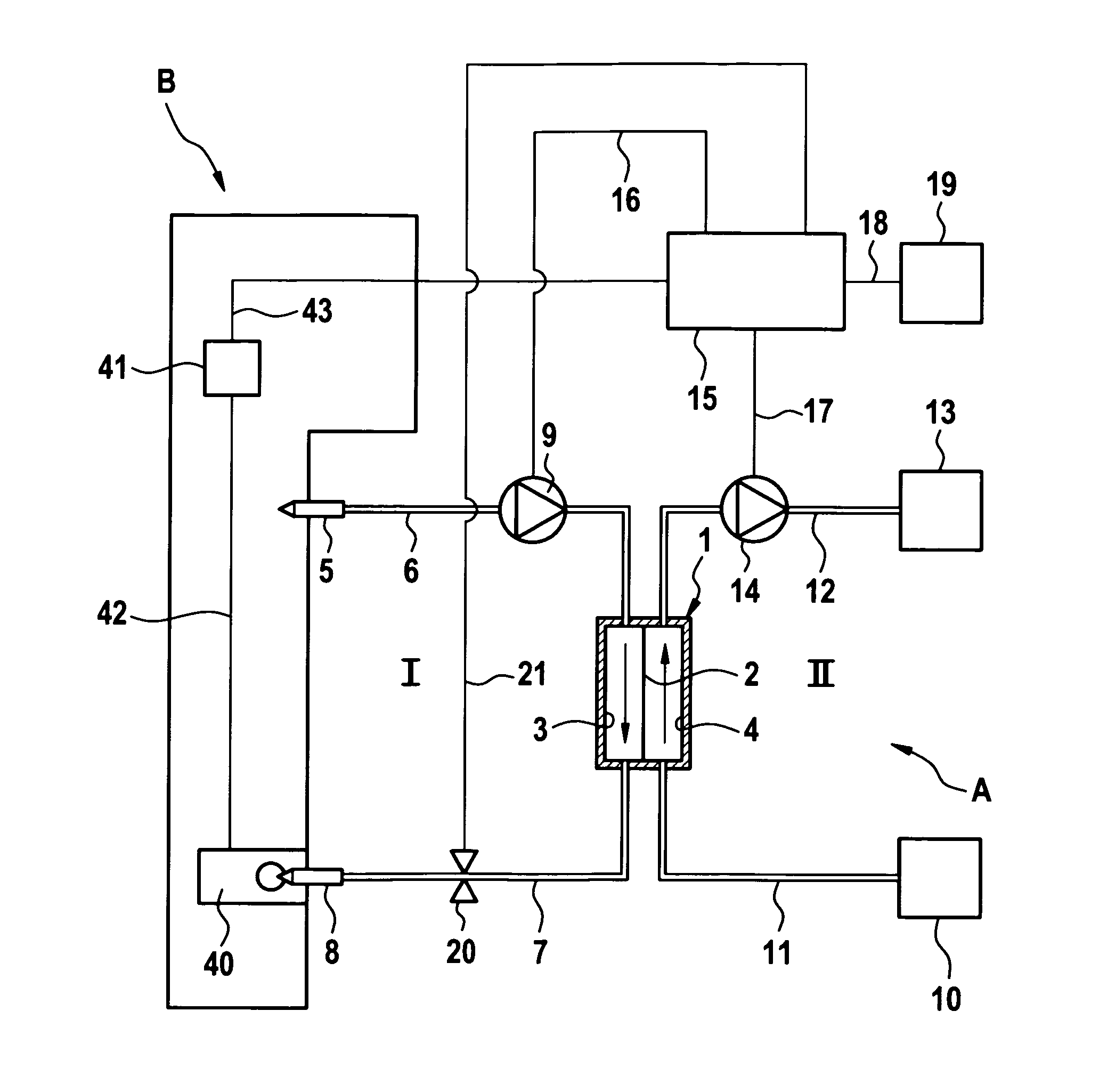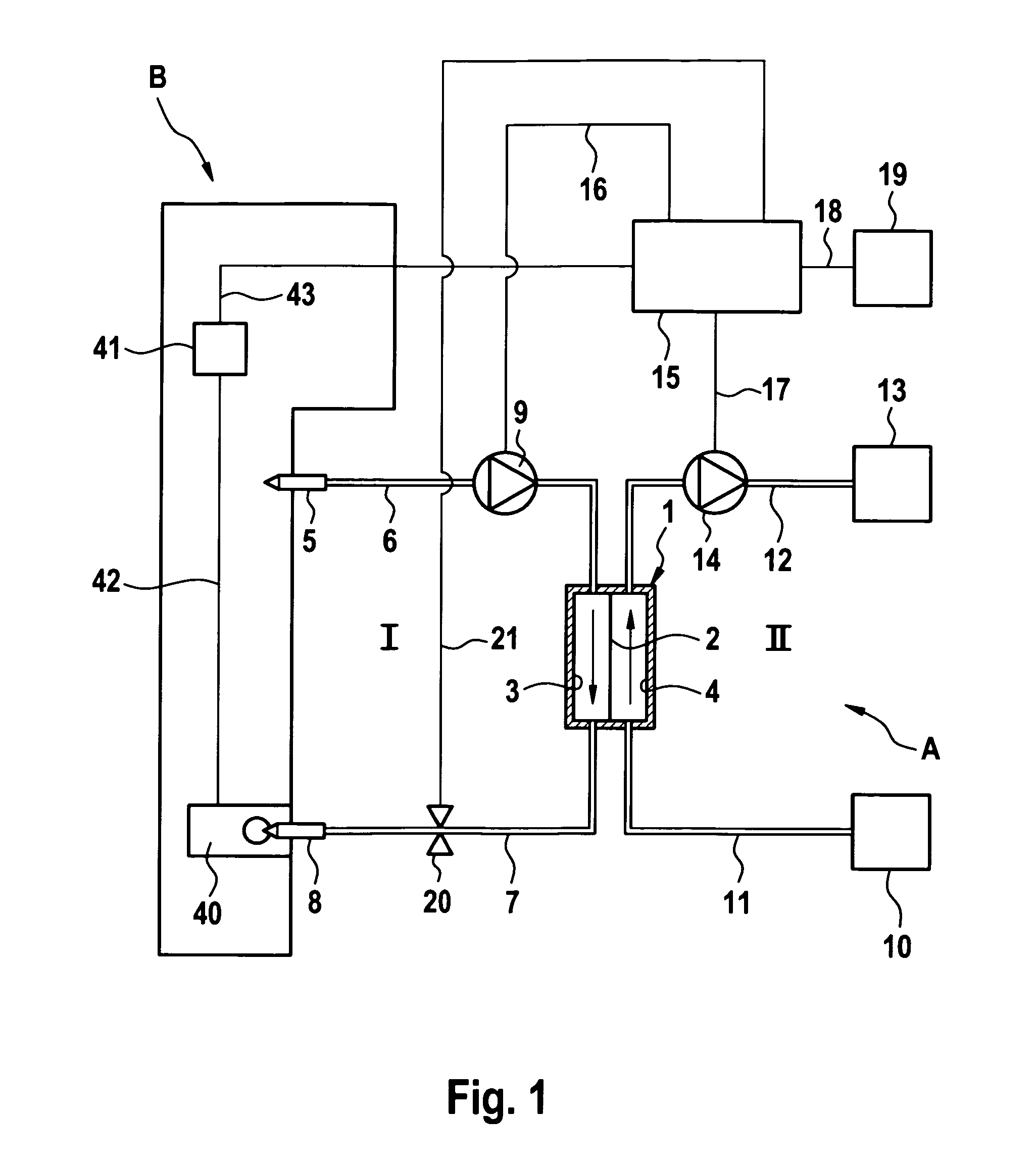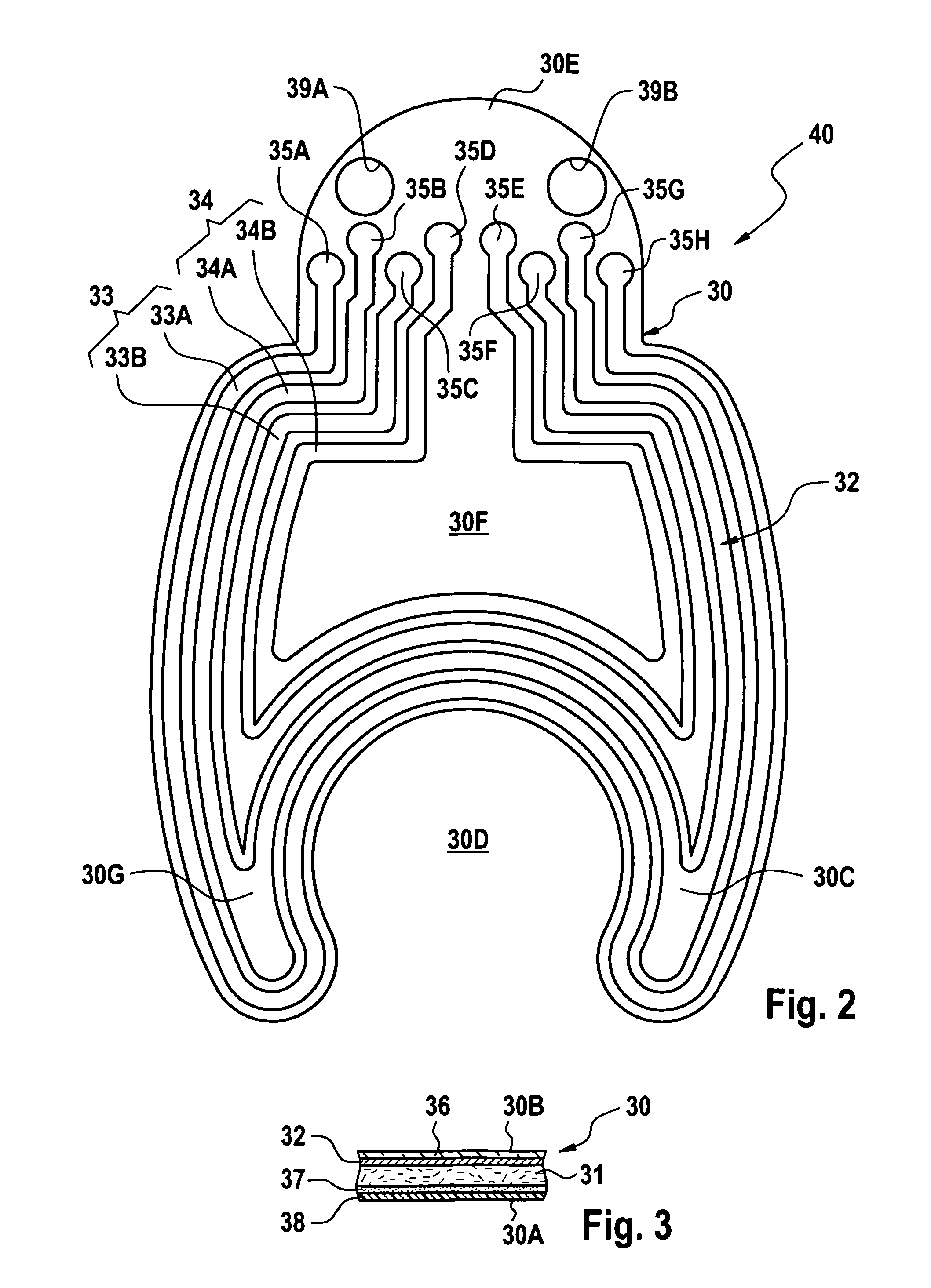Device for detecting moisture, for use with an arrangement for monitoring an access to a patient
- Summary
- Abstract
- Description
- Claims
- Application Information
AI Technical Summary
Benefits of technology
Problems solved by technology
Method used
Image
Examples
Embodiment Construction
[0053]FIG. 1 shows the principal components of a blood-treating apparatus, and in particular a hemodialysis apparatus, A, which has an arrangement B for monitoring the arterial and venous vascular accesses. In the present embodiment, the monitoring arrangement B is part of the hemodialysis apparatus A. The dialysis apparatus will first be described by reference to FIG. 1.
[0054]The hemodialysis apparatus A has a dialyzer 1 which is divided by a semi-permeable membrane 2 into a blood chamber 3 and a dialysis-fluid chamber 4. Connected to the patient's fistula or shunt by means of an arterial puncturing needle 5 is a flexible arterial line 6 which runs to the inlet of the blood chamber 3 of the dialyzer. Leading away from the outlet of the blood chamber 3 of the dialyzer is a flexible venous line 7 which is connected to the patient's fistula or shunt by means of a venous puncturing needle 8. Connected into the flexible arterial line 6 is a blood pump 9 which pumps the blood in the extr...
PUM
 Login to View More
Login to View More Abstract
Description
Claims
Application Information
 Login to View More
Login to View More - R&D
- Intellectual Property
- Life Sciences
- Materials
- Tech Scout
- Unparalleled Data Quality
- Higher Quality Content
- 60% Fewer Hallucinations
Browse by: Latest US Patents, China's latest patents, Technical Efficacy Thesaurus, Application Domain, Technology Topic, Popular Technical Reports.
© 2025 PatSnap. All rights reserved.Legal|Privacy policy|Modern Slavery Act Transparency Statement|Sitemap|About US| Contact US: help@patsnap.com



